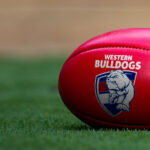From a physical perspective rugby is one of the most challenging sports in the world. Professional players spend all week preparing themselves to peak physically and mentally on game day. They then empty themselves physically and emotionally on the pitch and have to begin the process all over again. In my experience, the greatest players in the game are the ones who can replicate the same intensity of performance week in week out.
The pressure to produce peak performance is acute during a major tournament, like the Rugby World Cup. The 2015 edition opened on September 18th and will conclude on October 31st, comprising 48 matches in 44 days. The two teams that manage to make it all the way to the final will have played 7 international test rugby matches over a span of 44 days. This places huge physical demands on players and massive logistical demands on physiotherapists, strength and conditioning coaches, and management alike. One of the deciding factors in terms of performance and maintaining players’ fitness over the RWC will be the recovery strategies employed by the sports scientists within the teams.
Tournament demands
Rugby games drain the resources of the anaerobic, aerobic and neuromuscular systems. Sprinting, tackling, rucking, lineout lifting and scrummaging rely on the anaerobic system. Recovery and sustaining repeat efforts is supported by the aerobic system. The neuromuscular system is loaded by the amount of high intensity, reactive efforts required during competition. Thus identification of the amount and type of load is a requirement to design and implement appropriate recovery protocols. Tournaments where repeated peak performances are required necessitate replenishment of each energy system to win. The average length of time between matches for the Irish team, for instance, is 6 days. With a squad of 31 players it is imperative that these athletes are managed and monitored accordingly.
The load sustained by players is position-dependent, with backs demanding more of their anaerobic-aerobic system and forwards placing their neuromuscular-anaerobic system under substantial strain. During a tournament it is very important that load is managed and offset sufficiently to allow recovery. The time athletes spend in the gym or on the training pitch needs to be reduced. This can be achieved by shorter, higher quality, higher intensity training sessions. GPS and RPE can be used to monitor and adjust workloads more accurately.
Similarly, each player will experience and cope with the mental strain and fatigue of a tournament differently. State/trait dispositions and experience can influence both levels of perceived competence and levels of perceived stress in competition. Thus, individual approaches to both objective and subjective monitoring procedures are an important weapon for combating competition decrements. Both objective and subjective measures of load and performance (sleep quality, wellness etc.) are important due to post competition patterns of perceptual well-being: Subjective fatigue and negative mood states impinge on players’ readiness to perform in the days following competition. However, without accompanying physiological decrements, the changes are perceptual and subside with time and recovery.
Perceptual fatigue can be interlinked with mindset, so for players, sports psychology resources can be beneficial in combatting negative connotations of fatigue. A poor mindset can be draining for the entire team, thus limiting the use of words like “tired” can help boost mentality in camp. Similarly, allowing players complete down-time to switch off during tournament weeks is important to sustaining a healthy mentality. 4 days after competition, perceptual fatigue subsides. However, if subjective fatigue persists, or indeed if there are concomitant changes in objective markers of recovery, adaptation to preparation (or next-match) selection may be required.
To attenuate risk of fatigue, recovery is imperative to professional athletes. The following sections outline some commonly deployed approaches to recovery used by top level athletes.
Recovery
‘Rest as hard as you train’ is a mantra professional rugby coaches have encouraged their players to adopt. Common methods of recovery aim to reduce blood lactate levels, increase oxygenation and reduce fatigue-related muscle stiffness. Recovery methods are typically classed as active or passive. Previously, active methods were deemed desirable due the expediting removal of toxic by-products of muscular function from the system (i.e. carbon dioxide/lactic acid).
Active recovery
Active recovery involves completing exercise at a submaximal rate to gradually reduce heart and respiration rate but simultaneously maintain circulation to remove metabolites from active muscles and to increase capacity for re-activation when required. Passive recovery involves no additional activity – muscles are rested completely (Warren et al 2014). Although benefits of active recovery are evident, the additional mental effort (and perceived effort) required for active recovery must be considered, particularly for competition settings. Perceived fatigue and mental exertion increases when completing active recovery compared with passive recovery. Electronic muscle stimulation is a more recently developed recovery approach that combines the benefits of both active and passive recovery. EMG devices are applied directly to the muscle and induce minor, involuntary activation of the musculature that serves to drive metabolite removal but does not incur the additional perceived mental fatigue associated with traditional active recovery. Importantly, removing perceived exertion required to complete recovery has a distinct impact on physical recovery parameters highlighting the impact of subjective psychological factors on physical performance.
Nutrition
Nutrition protocols for players are pertinent throughout the tournament and specifically following competition. Refueling quickly and appropriately after a game can improve recovery rate and efficiency. This can be a challenge as a lot of rugby players struggle to eat solids after games due to nausea and other stomach issues. This could be due to reduced blood flow to the gut. During intense physical activity blood is redirected from internal organs to peripheral muscles that are being worked. This adaptation allows the human body to work more efficiently, without expending energy or resources on digestive functions that are not required for the task at hand on the pitch. Equally, a reduction in ghrelin, peptides and increased metabolites in the system often result in acid reflux.
Thus, getting calories in post-game through liquid supplements is a strategy used to combat this. Professionals in the area of nutrition play a key role here in preparing plans and educating players around the requirements for refueling pre and post-game.
Sleep
Sleep is fundamental to recovery for athletes. However, research findings are contradictory about the optimal quantity or quality of sleep required for sustaining performance. Decrements in sleep duration are associated with reduced psychomotor performance, thus increasing the amount and quality of sleep is beneficial for players. However, a lot of players do not sleep well the night before (because of nerves) or the night after (because of caffeine and/or adrenaline) games. This can have a negative impact on players’ ability to recover efficiently. Napping can be an effective way for players to reduce the impact of poor sleep practices during tournaments.
Conclusion
There are a lot of factors that need to be taken into consideration when planning the 5 or 6 rest days between games during the RWC tournament. Most professional teams will balance the coaches’ needs in terms of training with the players’ need for rest both mentally and physically. This requires planning and adaptation as the tournament evolves but ultimately will have a big bearing on who lines out in Twickenham on October 31st.



 More than Equal’s mission is to close the gender gap in motor sports and find and develop the first female Formula 1 world champion. They will now have an advanced operating system to centralize data for female drivers participating in More than Equal’s pioneering Development Programme.
More than Equal’s mission is to close the gender gap in motor sports and find and develop the first female Formula 1 world champion. They will now have an advanced operating system to centralize data for female drivers participating in More than Equal’s pioneering Development Programme.